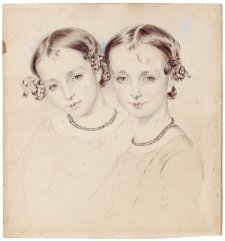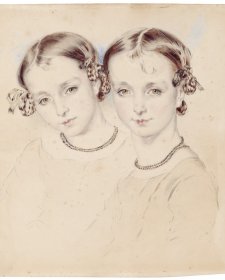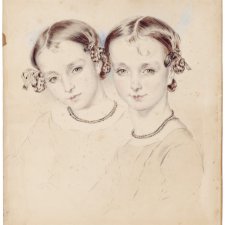Thomas Griffiths Wainewright (1794-1847) is one of the most intriguing and talented figures in colonial Australian art. A painter, essayist and man-about-town, Wainewright had moved in elite intellectual circles in England before being transported to Van Diemen's Land for forgery in 1837. Wainewright was raised by his grandfather, whose associates included Tom Paine, Mary Wollstonecraft, Josiah Wedgwood and William Blake. Aged 19, Wainewright began studying painting under Thomas Phillips and John Linnell. He then bought a commission in the army but served only a year. By age 20, he had begun publishing articles and reviews in the London Magazine and through his writing formed associations with figures such as Thomas Carlyle and Thomas de Quincey. At 26 he began exhibiting his paintings at the Royal Academy where he came under the influence of Henry Fuseli (with whose work his own was sometimes confused). He married in 1817 but lived beyond his means and took to resolving financial problems with forged signatures that gave him access to a substantial inheritance held in trust. Wainewright was suspected of fouler play when, some years later, an uncle, his mother-in-law and sister-in-law died, leaving money to him and his wife. A court found no evidence to convict him in these matters but uncovered his earlier transgressions. He was tried, found guilty and sentenced to transportation for life. In Van Diemen's Land, Wainewright worked on a road gang before being transferred to the Hobart Hospital where he worked as a wardsman. Here he began making portraits in watercolour and pencil, either on commission or as tokens of gratitude to those who had shown him kindness. His portrait of Jane and Lucy Cutmear (c. 1842), the daughters of the hospital gatekeeper, and that of the hospital matron Eleanor Fitzgerald (c. 1840) are two such examples. Between 1837 and his death in Hobart ten years later, Wainewright created portraits for 56 sitters: some of notables and officials, and others of respectable settlers and their families. His works are considered among the finest examples of colonial portraiture, noted for their charm, skill and delicacy as well as for the faces of Hobart society they document. Wainewright's colourful life has been the subject of biographies and has inspired semi-fictional accounts by writers such as Charles Dickens and Oscar Wilde. His works are held in a number of public collections including the National Gallery of Australia, the Art Gallery of South Australia, and the Tasmanian Museum and Art Gallery.
Portraits
Martha Sarah Butler c. 1845
Thomas Griffiths Wainewright Thomas Griffiths Wainewright age 51
Edward Paine Butler c. 1845
Thomas Griffiths Wainewright Thomas Griffiths Wainewright age 51



A man of superior attainments
Joanna Gilmour explores the life of a colonial portrait artist, writer and rogue Thomas Griffiths Wainewright.



Poison pen
Michael Desmond examines the career of the eighteenth-century suspected poisoner and portrait artist Thomas Griffiths Wainewright.



Elegance in exile
Portrait drawings from colonial Australia
Elegance in exile is an exhibition surveying the work of Richard Read senior, Thomas Bock, Thomas Griffiths Wainewright and Charles Rodius: four artists who, though exiled to Australia as convicts, created many of the most significant and elegant portraits of the colonial period.




